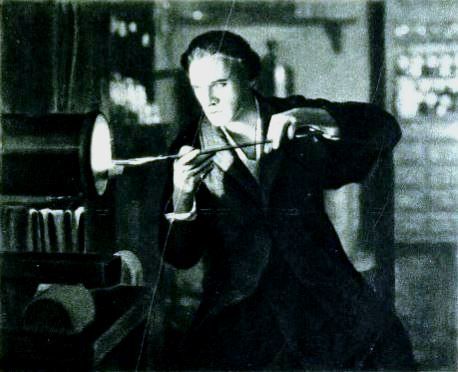You undoubtedly have a mental picture of a “mad scientist.” If you visited a costume shop and saw that label on a package, you could predict the contents: likely a white lab coat, a bushy fright wig, some thick-framed eyeglasses or goggles, and some test tubes or other instruments. We all know that the mad scientist is infamous because of his inventions. But who invented the mad scientist?

The most convincing answer is Mary Shelley, who was just 19 years old when she finished writing Frankenstein: Or, The Modern Prometheus. Shelley’s 1818 story of the young medical student horrified by his own Creature is preeminent in the “mad scientist” genre, but Dr. Frankenstein was soon joined by others, most famously Dr. Jekyll and Dr. Moreau.
In this summer’s “Weird Victorian Science” seminar, we’ll be exploring novels and stories that portray “mad” scientists, with the goal of better understanding how this figure became a cultural fixture and participated in 19th-century debates about experimentation, disease, sanity, and the ethical limits of exploration.
Some of the texts we will discuss, like Frankenstein and H.G. Wells’ The Island of Dr. Moreau, are especially concerned with the relatively new science of anatomy and surgery, which may tempt humans to play God by remaking creation. Others, like Robert Louis Stevenson’s Dr. Jekyll and Mr. Hyde and Nathanial Hawthorne’s “Rappaccinni’s Daughter,” imagine chemical compounds that can alter a person’s inmost being. Still others, like Edgar Allen Poe’s “The Facts in the Case of M. Valdemar” and George Eliot’s “The Lifted Veil,” portray human efforts to control or direct the process of death.
This 19th-century fascination with “mad” scientists stems from fears about the pace of new discoveries during the period. Blood transfusions, germ theory, anesthesia, the development of cell theory, and the invention of the stethoscope revolutionized the treatment of patients but also caused anxiety about exactly what medical practitioners were doing with the human body. It didn’t help that until the 1832 Anatomy Act in England, “body snatchers” stole cadavers for medical dissection from graves. Even if doctors’ discoveries led to cures, could their activities really be trusted? Chemistry similarly underwent major changes in the 19th century, with the discovery of Boyle’s law of gasses, Kelvin’s absolute zero, the periodic table, vaccination, pasteurization, and a number of drugs (including aspirin, quinine, and morphine). Once again, despite the positive effects of these discoveries, they raised fears as well. Could scientists change human nature? Could they prevent death? Where would they stop – if they stopped at all? The publication of Charles Darwin’s On the Origin of Species in 1859 added new anxieties: Did humans really evolve from animals? Where did this leave ethics and morality? Where might science lead next, and could humans direct its destination?
In our hopes and fears about science, we are heirs of the Victorians. In our era of gene splicing, nuclear weapons, and artificial intelligence, we find ourselves wrestling with many of the same questions they debated. What should the limits of science be, and who should enforce them? Is it possible to unite scientific objectivity and empathy? What if we’re on a ride we can’t stop or control?
Join us in Weird Victorian Science to consider these questions, and to enjoy some rattling good reads in the process!





